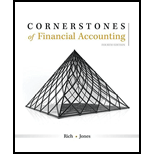
Concept introduction:
Depletion:
When natural resources such as coal, iron ore, oil reserves and mineral etc. are extracted from the earth the company records the cost of extraction to the particular unit of the natural resource that is being extracted and the process of allocating cost according to the usage of natural resource during a specific period is called as depletion.
Fixed assets play a major in the contribution of revenue to the company and they are significant for the efficient and continuous operation of the day to the day business. Depreciation is the process in which the cost of the fixed assets other than land is allocated to expense over the useful life of the asset.
Amortization:
Amortization is same as depreciation but it is used for intangible assets like patents, franchise,
It is a statement of the financial position of the company which specifies the assets, liabilities and equity at a specified date.
Determine the balance sheet classification and cost allocation process for each item.
Want to see the full answer?
Check out a sample textbook solution
Chapter 7 Solutions
Cornerstones of Financial Accounting
- Please help me solve this general accounting question using the right accounting principles.arrow_forwardCan you solve this general accounting problem with appropriate steps and explanations?arrow_forwardI am trying to find the accurate solution to this general accounting problem with the correct explanation.arrow_forward
- ← Week 1: Homework Question 3 of 4 8.75/10 The project is completed in 2025, and a successful patent is obtained. The R&D costs to complete the project are $113,000. The administrative and legal expenses incurred in obtaining patent number 472-1001-84 in 2025 total $16,000. The patent has an expected useful life of 5 years. Record the costs for 2025 in journal entry form. Also, record patent amortization (full year) in 2025. (Credit account titles are automatically indented when amount is entered. Do not indent manually. If no entry is required, select "No Entry" for the account titles and enter O for the amounts. List all debit entries before credit entries.) Account Titles and Explanation Research and Development Expense Cash (To record research and development costs) Patents Cash (To record legal and administrative costs) Amortization Expense Patents (To record one year's amortization expense) Debit 113000 16000 3200 Credit 113000 16000 3200arrow_forwardJoe transfers land to JH Corporation for 90% of the stock in JH Corporation worth $20,000 plus a note payable to Joe in the amount of $40,000 and the assumption by JH Corporation of a mortgage on the land in the amount of $100,000. The land, which has a basis to Joe of $70,000, is worth $160,000. a. Joe will have a recognized gain on the transfer of $90,000. b. Joe will have a recognized gain on the transfer of $30,000.c. JH Corporation will have a basis in the land transferred by Joe of $70,000. d. JH Corporation will have a basis in the land transferred by Joe of $160,000. e. None of the above.arrow_forwardPlease provide the correct answer to this general accounting problem using accurate calculations.arrow_forward
 Financial Accounting: The Impact on Decision Make...AccountingISBN:9781305654174Author:Gary A. Porter, Curtis L. NortonPublisher:Cengage Learning
Financial Accounting: The Impact on Decision Make...AccountingISBN:9781305654174Author:Gary A. Porter, Curtis L. NortonPublisher:Cengage Learning College Accounting (Book Only): A Career ApproachAccountingISBN:9781337280570Author:Scott, Cathy J.Publisher:South-Western College Pub
College Accounting (Book Only): A Career ApproachAccountingISBN:9781337280570Author:Scott, Cathy J.Publisher:South-Western College Pub


